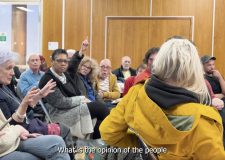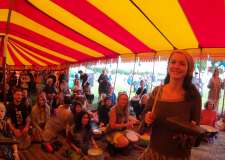Brighton and Hove doctors spell out their response to A&E crisis
Doctors’ leaders in Brighton and Hove have set out their response to the crisis in accident and emergency (A&E) earlier this year.
The Brighton and Hove Clinical Commissioning Group (CCG) has been working with staff from the Royal Sussex County Hospital to try to reduce the soaring number of patients turning up in A&E.
In a report to the Brighton and Hove City Council Health and Wellbeing Overview and Scrutiny Committee, the CCG said that it was also working with other organisations too.
The report is to be discussed by the committee next Tuesday (10 September) at a meeting at Hove Town Hall.
The CCG said in its report that primary and community care staff were working together to provide co-ordinated and structured preventive care for older people and those with complex needs.
It also said: “GP practices are now having regular meetings with their IPCTs (Integrated Primary Care Teams) using a computer-based risk stratification tool to review their top 10 per cent of patients who are at the highest risk of admission to hospital.
“A plan has now been agreed with Sussex Community Trust and Sussex Partnership Trust to upload care plans for patients with dementia, nearing end of life, with continence issues or on the caseload of the IPCTs on to a computer system known as IBIS.
“This enables the ambulance service to see and support their care plans should they phone 999.”
The report said that local general practitioners (GPs) were trying to increase the number of patients ringing 999 who could be managed by telephone triage or more appropriate community alternatives where conveyance to A&E is avoidable.
The report said: “The number of patients being managed by telephone triage, eg, hear and treat, are above expected levels at 12 per cent.
“Overall ambulance service activity in Brighton and Hove is lower than the same time last year. However, more patients than expected are still being conveyed to hospital.
“We are working with SECAMB (the South East Coast Ambulance Service) on a supported conveyance pilot which provides ambulance crews with advice and support to help them use community services as an alternative to A&E.”
The report also said: “More people are using community services that prevent admission, eg, Community Rapid Response Service (CRRS) and Rapid Access Clinic for Older People, and we will create additional capacity in both services over the winter period.
“Recruitment has started for the additional staff to enable the CRRS team to look after people who need intravenous therapy or catheter care.
The report also said: “We have seen an increased number of patients going home with support rather than to bed-based rehabilitation.
“There are currently no patients waiting to go to a community rehabilitation bed.
“The Urgent Care Clinical Forum led by the CCG chair Dr Xavier Nalletamby and the chief of clinical leadership Dr Naz Khan has met again and discussions focused on how we can work together to improve urgent care services for frail and older people.
“The forum identified a number of key areas to prioritise over the winter period.”
The CCG said that it was planning a comprehensive communications campaign around urgent care services informed by a recent public engagement event and the findings of the Healthwatch review of A&E.
This would include a mobile phone app for the public on how to access urgent care services locally.
The Health and Wellbeing Overview and Scrutiny Committee meeting starts at 4pm next Tuesday (10 September) and is open to the public.





















